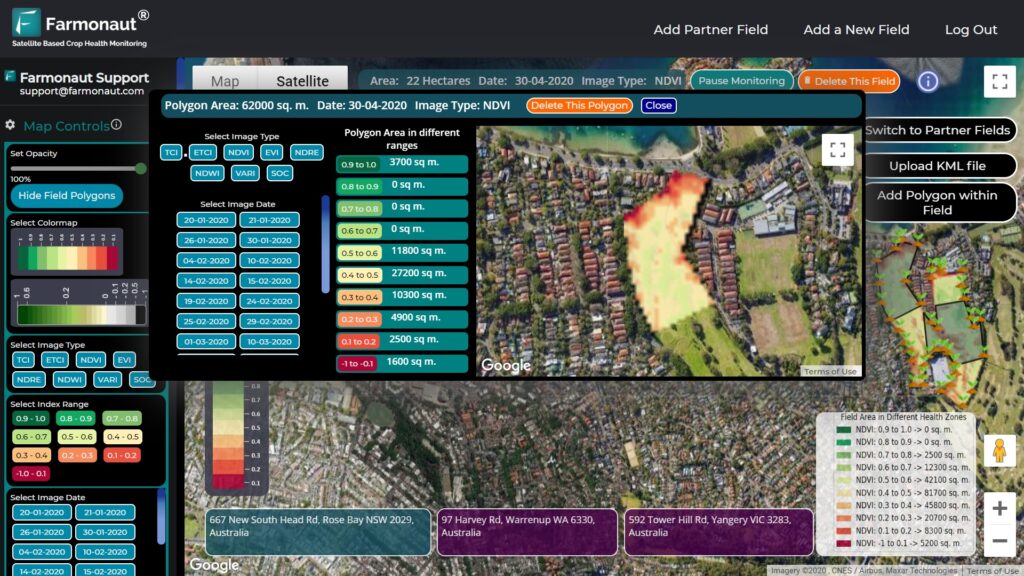USDA Office Closure in Yuma: How It Impacts Arizona’s Winter Lettuce Capital and Rural Agriculture Services

“Yuma, Arizona, known as the ‘Winter Lettuce Capital of the World,’ produces leafy greens for millions of Americans nationwide.”
In the heart of Arizona’s agricultural landscape, a storm is brewing that could significantly impact the nation’s food supply and the livelihoods of countless farmers. We’re here to discuss the potential closure of the United States Department of Agriculture (USDA) office in Yuma, Arizona – a decision that has sent shockwaves through the agricultural community and beyond.
Yuma, affectionately known as the “Winter Lettuce Capital of the World,” is facing a challenge that could reshape its agricultural future. The proposed closure of the local USDA office is part of a broader initiative aimed at cutting government expenses. However, the ramifications of this decision extend far beyond simple cost-saving measures.
Understanding Yuma’s Agricultural Significance
Before we delve into the potential impacts of the USDA office closure, it’s crucial to understand why Yuma holds such a vital position in America’s agricultural landscape.
- Yuma is responsible for producing a significant portion of the nation’s leafy greens, especially during the winter months.
- The region’s unique climate allows for year-round farming, making it a critical source of fresh produce when other parts of the country are unable to grow.
- The agricultural industry in Yuma is not just about food production; it’s a major economic driver, providing jobs and supporting local businesses.
Given this context, the potential closure of the USDA office in Yuma is not just a local issue, but one that could have ripple effects across the entire nation’s food supply chain.
The Role of the USDA Office in Yuma
The USDA office in Yuma has been serving the community for over two decades, playing a pivotal role in supporting local farmers and agricultural businesses. Let’s break down the key functions of this office:
- Information Hub: The office serves as a crucial source of information for farmers, providing updates on agricultural policies, market trends, and best practices.
- Grant Programs: It facilitates access to various grant programs that support farm improvements, research, and innovation in agriculture.
- Low-Interest Loans: The office helps farmers secure low-interest loans, which are often essential for small and medium-sized farms to invest in equipment or expand their operations.
- Natural Resources Conservation Service: This department, housed within the USDA office, plays a vital role in helping farmers implement sustainable practices and conserve natural resources.
The potential loss of these services could create significant challenges for Yuma’s agricultural community, potentially impacting productivity and sustainability in the region.

The Proposed Closure: Understanding the Context
The potential closure of the USDA office in Yuma is part of a broader initiative aimed at reducing government spending. According to the Department of Government Efficiency’s website, closing this office could result in savings of nearly $400,000. While fiscal responsibility is important, it’s crucial to weigh these savings against the potential costs to the agricultural community and the broader economy.
This proposed closure is not an isolated incident. It’s part of a larger plan that includes the shuttering of hundreds of USDA offices nationwide, with about a dozen in Arizona alone. This widespread reduction in USDA services could have far-reaching consequences for rural communities across the country.
Potential Impacts of the USDA Office Closure
The closure of the USDA office in Yuma could have multifaceted impacts on the local agricultural community and beyond. Let’s explore some of these potential consequences:
1. Reduced Access to Critical Information
Farmers rely on the USDA office for up-to-date information on a variety of topics, including:
- Market trends and pricing
- Weather forecasts and climate data
- Pest and disease alerts
- Policy changes affecting agriculture
Without easy access to this information, farmers may struggle to make informed decisions about planting, harvesting, and marketing their crops.
2. Limited Access to Grants and Loans
The USDA office plays a crucial role in helping farmers access financial resources. The potential closure could:
- Make it more difficult for farmers to apply for and secure grants
- Reduce access to low-interest loans, which are often essential for farm improvements or expansions
- Potentially slow down the processing of financial assistance applications
These financial constraints could limit the ability of Yuma’s farmers to invest in their operations, potentially impacting productivity and competitiveness.
3. Impact on Natural Resource Conservation
The Natural Resources Conservation Service, housed within the USDA office, provides invaluable support to farmers in implementing sustainable practices. The closure could:
- Reduce access to expert advice on soil conservation, water management, and other environmental issues
- Limit farmers’ ability to participate in conservation programs
- Potentially lead to less sustainable farming practices due to lack of guidance and support
This could have long-term implications for the environmental sustainability of agriculture in the Yuma region.
4. Economic Ripple Effects
The closure of the USDA office could have broader economic impacts:
- Potential job losses for USDA employees in Yuma
- Reduced economic activity in the local community due to fewer visitors to the USDA office
- Possible decreased agricultural productivity, which could impact related industries and jobs
These economic effects could extend beyond the agricultural sector, potentially impacting the overall economy of Yuma and surrounding areas.
Voices from the Community
To understand the potential impact of the USDA office closure, it’s important to hear from those directly affected. Charlene Fernandez, former USDA director for rural Arizona, shared her perspective:
“It’s very disappointing just thinking about who Yuma, Arizona is; we have to think about how critical we are. All the leafy greens we grow right here are critical to the rest of the country.”
Fernandez’s words underscore the national significance of Yuma’s agricultural output and the potential far-reaching consequences of the USDA office closure.
“The USDA office in Yuma supports farmers with essential services, including grants and low-interest loans for agricultural development.”
Political Response and Advocacy
The proposed closure has not gone unnoticed by political leaders. Senator Ruben Gallego has taken action by sending a letter to the USDA, urging them to reconsider the decision to close the Yuma office. In his letter, Gallego highlighted several key points:
- The significant local USDA investments that have funded affordable housing in the area
- Water infrastructure improvements in low-income communities
- The crucial role these investments play in supporting the region’s agriculture industry
This political advocacy underscores the importance of the USDA office to Yuma’s agricultural community and the broader economic landscape of the region.
The Human Cost: Impact on USDA Employees
While much of the discussion around the USDA office closure focuses on its impact on farmers and the agricultural industry, it’s important not to overlook the human cost to USDA employees. The closure would directly affect the livelihoods of those working in the Yuma office.
Some of these employees were recently rehired after federal mass layoffs that saw 6,000 USDA employees let go. The potential closure of the Yuma office could mean these workers face unemployment once again, creating personal and financial hardships for them and their families.
Comparative Analysis: Impact of USDA Yuma Office Closure on Arizona Agriculture
| Service/Resource | Current Availability | Potential Impact if Office Closes |
|---|---|---|
| Agricultural Information | Readily available locally | Reduced access, potential delays in information dissemination |
| Grant Programs | Easily accessible with local support | Difficulty in application process, potential decrease in grant approvals |
| Low-Interest Loans | Local assistance in application and processing | Reduced access, longer processing times |
| Natural Resources Conservation Support | On-site expert guidance | Limited access to expertise, potential decline in conservation practices |
| Job Market | USDA office provides local employment | Job losses, potential economic impact on local community |
| Estimated Number of Farmers Affected | All local farmers benefit | Potentially hundreds of farmers impacted |
| Potential Economic Loss | N/A | Millions in potential lost productivity and reduced grant/loan access |
The Role of Technology in Mitigating Impacts
While the potential closure of the USDA office in Yuma presents significant challenges, technology could play a role in mitigating some of the impacts. Advanced agricultural technologies, such as those offered by companies like Farmonaut, could help fill some of the gaps left by the USDA office closure.
For instance, Farmonaut’s carbon footprinting tools could help farmers monitor and reduce their environmental impact, partially offsetting the loss of guidance from the Natural Resources Conservation Service. Similarly, Farmonaut’s crop loan and insurance services could provide an alternative avenue for farmers seeking financial support in the absence of USDA-facilitated loans.
While these technological solutions can’t fully replace the comprehensive services provided by the USDA office, they represent an important avenue for farmers to explore in adapting to potential changes.
Call to Action: Making Your Voice Heard
As the future of the USDA office in Yuma hangs in the balance, it’s crucial for stakeholders to make their voices heard. Charlene Fernandez encourages people, especially farmers who rely on the office’s services, to speak out:
“Send a letter to this administration, to the USDA secretary. Let them know how important Yuma is and how critical the work that we do here is.”
This call to action underscores the power of community advocacy in influencing policy decisions. By sharing personal stories and highlighting the importance of the USDA office to Yuma’s agricultural community, stakeholders can play a role in shaping the outcome of this situation.
Looking to the Future: Potential Alternatives and Solutions
While the potential closure of the USDA office in Yuma presents significant challenges, it’s important to consider potential alternatives and solutions that could help mitigate the impact:
- Digital Services: Expanding online USDA services could help maintain access to information and resources, even without a physical office presence.
- Mobile USDA Units: Implementing mobile USDA units that visit different parts of the region could help maintain some level of in-person service.
- Partnerships with Local Organizations: Collaborating with local agricultural organizations to provide some USDA services could help fill gaps left by the office closure.
- Enhanced Remote Support: Improving remote support systems could help farmers access USDA resources and assistance from afar.
While these alternatives may not fully replace the services provided by a local USDA office, they could help ensure that Yuma’s agricultural community continues to have access to crucial support and resources.
The Broader Implications: A National Perspective
The potential closure of the USDA office in Yuma is not an isolated incident. It’s part of a larger trend of USDA office closures across the country. This raises important questions about the future of agricultural support in rural America:
- How will these closures impact the overall productivity of American agriculture?
- What will be the long-term effects on rural communities that rely heavily on agriculture?
- How can the USDA continue to fulfill its mission of supporting American farmers with reduced physical presence?
These questions highlight the need for a national conversation about the role of the USDA in supporting American agriculture and rural communities in the 21st century.
The Role of Innovation in Agriculture
As we consider the potential impacts of the USDA office closure, it’s important to recognize the growing role of innovation in agriculture. Advanced technologies are increasingly helping farmers optimize their operations and overcome challenges.
For instance, Farmonaut’s fleet management solutions can help large-scale farms efficiently manage their resources, potentially offsetting some of the impacts of reduced USDA support. Similarly, Farmonaut’s traceability tools can help farmers meet regulatory requirements and improve their market position, functions that may become more crucial in the absence of local USDA guidance.
While these technological solutions can’t fully replace the comprehensive services of a USDA office, they represent an important avenue for farmers to explore in adapting to potential changes in the agricultural landscape.
FAQ Section
- Q: Why is the USDA office in Yuma facing potential closure?
A: The closure is part of a broader initiative to reduce government spending. The Department of Government Efficiency estimates that closing this office could save nearly $400,000. - Q: What services does the USDA office in Yuma currently provide?
A: The office provides crucial services including agricultural information, grant programs, low-interest loans, and support from the Natural Resources Conservation Service. - Q: How might the closure impact Yuma’s agricultural community?
A: The closure could reduce access to vital information, limit financial resources for farmers, impact conservation efforts, and potentially affect the overall productivity of the region’s agriculture. - Q: Are there other USDA offices facing similar closures?
A: Yes, the proposed closure in Yuma is part of a larger plan that includes shuttering hundreds of USDA offices nationwide, with about a dozen in Arizona alone. - Q: What actions are being taken to prevent the closure?
A: Senator Ruben Gallego has sent a letter to the USDA urging them to reconsider the decision. Community members, especially farmers, are encouraged to voice their concerns to state leaders and the USDA.
Conclusion: A Critical Juncture for Yuma’s Agricultural Future
The potential closure of the USDA office in Yuma represents a critical juncture for the region’s agricultural future. As the “Winter Lettuce Capital of the World,” Yuma plays a vital role in the nation’s food supply chain, and the loss of local USDA services could have far-reaching consequences.
While the proposed closure aims to reduce government spending, it’s crucial to consider the potential costs to the agricultural community, the local economy, and even the national food supply. The services provided by the USDA office – from information dissemination to financial support and conservation guidance – are integral to the success of Yuma’s farmers.
As this situation unfolds, it’s important for all stakeholders – farmers, community members, and policymakers alike – to engage in the conversation and consider both the immediate and long-term implications of this decision. Whether through advocacy, exploring technological alternatives, or developing new support systems, the agricultural community must adapt to ensure its continued success and sustainability.
The story of the USDA office in Yuma is more than just a local issue – it’s a microcosm of the challenges facing rural agricultural communities across America. As we navigate this changing landscape, we must strive to balance fiscal responsibility with the need to support the farmers who feed our nation.
The future of Yuma’s agriculture, and indeed that of many rural communities across the country, hangs in the balance. It’s up to all of us to ensure that the vital work of supporting American agriculture continues, regardless of the challenges we face.
Earn With Farmonaut: Affiliate Program
Earn 20% recurring commission with Farmonaut’s affiliate program by sharing your promo code and helping farmers save 10%. Onboard 10 Elite farmers monthly to earn a minimum of $148,000 annually—start now and grow your income!
Farmonaut Subscriptions









